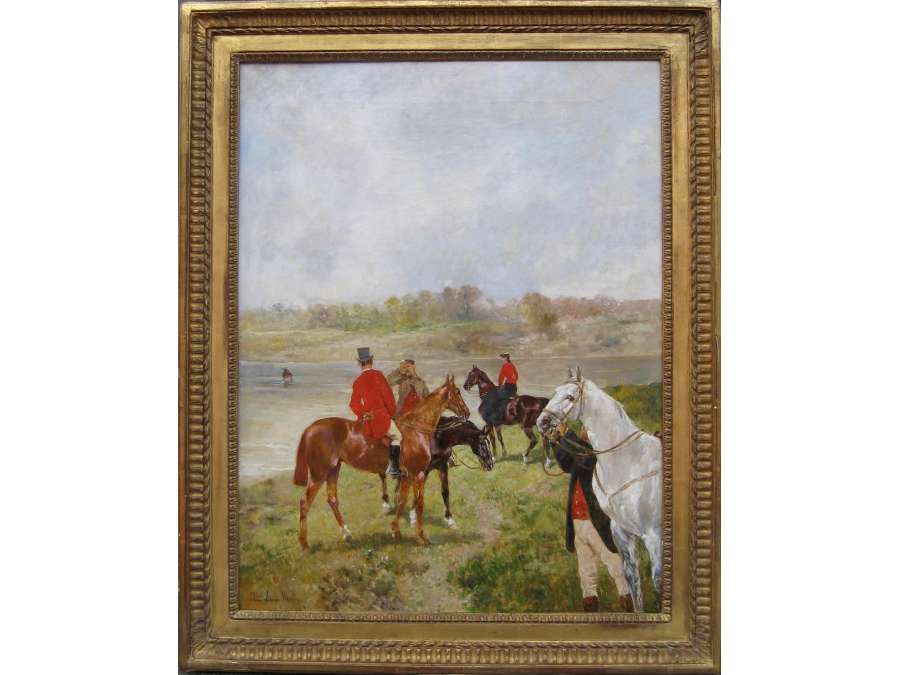French painter
Bat-l'eau, hunting scene
Oil on canvas
Signed lower left
Dimensions: 65 x 50 cm, with frame: 78 x 62 cm.
Old exhibition label on the back with the name of the artist, an exhibition number 656 and titled "Les bord de l 'étang"
John Lewis Brown was born in Bordeaux in a family of English officials of the XVIII th century. Coming from Scotland, the Browns would have introduced the purebred English race to France.
This table illustrates a hunting party. The scene illustrates the bat-d'eau, the moment of the hunt when the hunted animal takes refuge in the water. The horses and the men are at a standstill; the hunters abandon the pursuit. With humor, the painter gives the man in the foreground the head of his white horse.
The painter pays all his pictorial attention to the beast, the man is nothing more than a colored anecdote. The touch is free and precise, the colors bright and the palette reduced. He paints with a clear, assertive style. The artist refuses both academicism and the romantic humanization of the beast, only interested in the tamed horse, which he studies in the exercise of his functions.
At the turn of the century, the interest shown in Lewis Brown was linked more to his late rallying to Impressionism than in its first manner. From his second pictorial impetus, he corresponded with Pissarro, Manet, Degas, Sisley, Isabey. His palette cleared up when he joined the Impressionists in Paris.
During his lifetime, John Lewis Brown moved away from the politics of Salons and institutional events. In 1848, he started at the Salon with Tambour , and did not re-exhibit until 1859. The artist only wanted to experience the joy of painting: he only intended to be his painter, his analyst, his psychologist, poet of his attitudes. and their preferences.
His ambition is to worship horses and to paint them up close. If the painter gives himself masters, Géricault surpasses them all. He admires him for having "enjoyed himself in the real stables, among pride, brutality and all that there is more horse in the horse".
His father owns a chateau in the Bordeaux region; wine estate still in operation today. The stud farm he owns is his son's first step towards equine painting: he tirelessly copies and draws horses. The painter is self-taught; he worked for two years at Haras des Pins and looked at the work of Bonington, a distant precursor of Impressionism to whom he showed his sympathy.
He copies Cuyp, Karel, Philips Wouverman, toured Italy twice. In 1852, he spent a long time in Copenhagen to respond to an order from the French State, to copy Rembrandt's Les Pèlerins d'Emmaüs . The painter finds success through exhibitions in the provinces, receives a gold medal in Limoges. His birth made him legitimate with the aristocracy that he portrayed for a time.

 English
English  Français
Français









